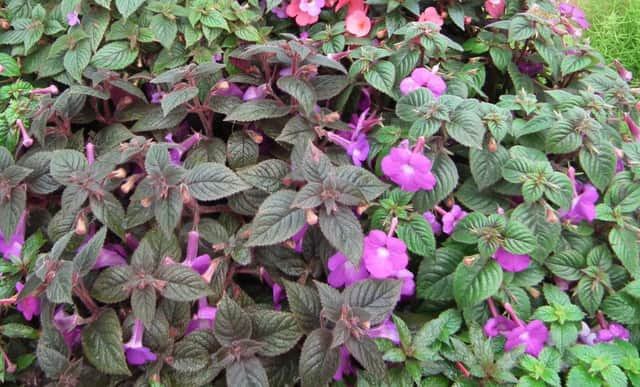BRIAN KIDD: Now the lawn's sorted let's concentrate on the greenhouse


It’s amazing how much better the garden looks when the grass has been mown.
It grew rapidly because of a feed and the wet soil soon produced grass almost a foot high.
Advertisement
Hide AdAdvertisement
Hide AdTo prevent damage, the height of the mower blades were raised and two days later the grass was mown again but not cut too short.
The pleasing thing is that it now looks as it should – a lovely green carpet which makes the garden look even larger .
Now for the greenhouse, which is full of summer bedding seedlings which will gradually be hardened-off ready to plant after May 21, our last frost date.
When bedding plants are taken out of the greenhouse, what plants shall we have in there besides tomatoes and cucumbers?
Advertisement
Hide AdAdvertisement
Hide AdIt’s good to have tomatoes on one side of the greenhouse with a bench for colourful plants on the opposite.
Have a look at gloxinia corms. The flowers are gorgeous with deeply-veined, attractive leaves. They are easy to grow in any potting compost.
Another favourite is the hot water plant, so-called because it doesn’t like being watered with very cold water. Try to find achimenes. It might be hard because people don’t buy them any more.
Primula obconica is a lovely plant but some people are allergic to the hairs on the backs of the leaves. But primula malacoides doesn’t have this problem and the seeds can be sown this week.
Advertisement
Hide AdAdvertisement
Hide AdPrimulas need light to germinate well so after scattering the seeds on to the seed tray, lightly cover the seeds with vermiculite and germination should happen within three weeks.
To prevent damping-off disease, use copper mixture – one tablespoon in a gallon of water – and put the solution in a bowl of water.
Place the seed tray into the bowl and allow the compost to absorb the solution. After about 10 minutes, the surface of the seed tray will be glistening, which means the compost is saturated and can then be placed where the seeds are to germinate.
Fuchsias are the best plants for flowers all summer in the greenhouse and there are literally thousands of varieties available at affordable prices – less than a pound for a rooted cutting.
Advertisement
Hide AdAdvertisement
Hide AdPot the cuttings in a three-inch diameter pot and nip out the tip to encourage them to produce side shoots. For a mass display of flowers, take out the tips of the shoots after three pairs of leaves mature and pot the plants into four-and-a-half inch pots in any potting compost.
Feed the plants after a month with a weak solution of liquid tomato feed and by the end of July flowers will emerge.
If the dead ones are picked off daily, they will continue to flower until really cold weather sets in.
THIS WEEK’S TOP TIP
Look out for hawthorn flowers, often called bread and cheese, or perhaps better-known as May blossom.
Advertisement
Hide AdAdvertisement
Hide AdIt’s common and often grown as countryside hedges. Once it finishes flowering where you live, there won’t be another spring frost. One of the last places to see the end of May blossom is in low-lying areas around Winchester. These are called frost pockets.